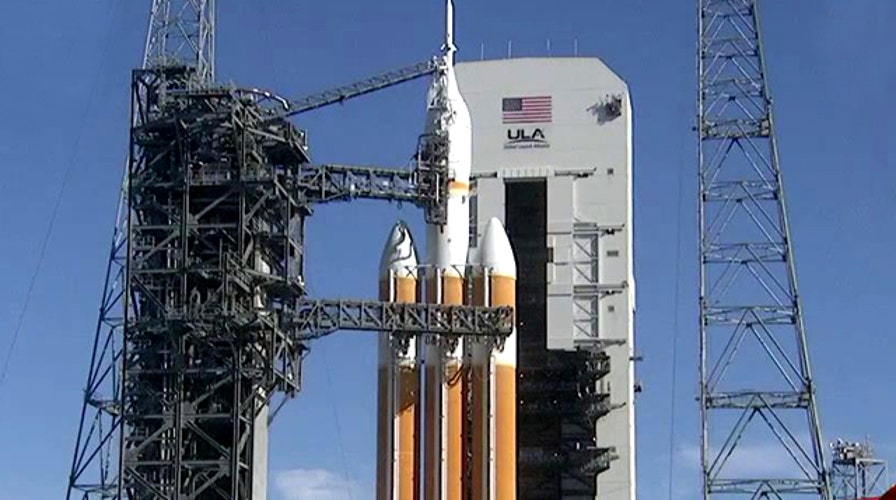NASA scrubbed the eagerly-anticipated test flight of its new Orion spacecraft on Thursday morning after experiencing technical glitches.
The space agency is now planning to launch Orion at 7:05 a.m ET Friday.
Thursday's test flight suffered a series of delays. The launch, which was scheduled for 7:05 a.m ET, was initially pushed back while a nearby boat was removed from the launch area. Two further delays occurred when when wind conditions exceeded the limits set for the launch.
With the countdown clock at around three minutes, the launch was hit with a third delay when liquid oxygen valves on two of Orion's three rocket boosters would not close properly. NASA engineers resolved the issues but then discovered a problem with a hydrogen tank valve.
Eventually a launch time of 9:44 a.m. ET, right at the end of the launch window, was set. However, with limited battery power left for the rocket's video monitoring system, NASA management took the decision to scrub the launch.
Expected to last 4 hours and 23 minutes, Thursday’s orbital mission aimed to take Orion deeper into space than any spacecraft built for humans has traveled in more than 40 years.
The unmanned flight, dubbed Exploration Flight Test-1, will provide NASA with vital information on the spacecraft’s performance. NASA plans to eventually use Orion on ambitious manned missions to Mars and an asteroid.
The Orion test flight comes at a crucial time for U.S. spaceflight, which has recently suffered some high-profile setbacks. On Oct. 28 an unmanned Antares rocket exploded in a fireball shortly after liftoff from a NASA launchpad in Wallops Island, Virginia. Just three days later Virgin Galactic's SpaceShipTwo space tourism rocket crashed during a test flight over the Mojave Desert, killing one of the two pilots aboard and seriously injuring the other.
The successor to the now-retired Space Shuttles, Orion was expected to orbit earth twice, covering more than 60,000 miles and reaching an altitude of 3,600 miles, almost 14 times beyond the International Space Station’s orbit.
Thursday’s test was managed by NASA contractor Lockheed Martin. A Delta IV Heavy Rocket built by United Launch Alliance was to carry Orion on the first stage of its journey.
Future Orion launches will use the mega rocket still under development by NASA, known as SLS or Space Launch System. The first Orion-SLS launch is targeted for 2018, unmanned, followed by the first piloted mission in 2021.
Ahead of the Orion launch, NASA replaced the Kennedy Space Center countdown clock, which dated back to the Apollo 12 mission in 1969, with a new high-tech version. NASA also joined forces with the Sesame Street muppets to count down to Thursday’s test flight.
The Associated Press contributed to this report.
Follow James Rogers on Twitter @jamesjrogers

